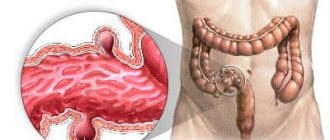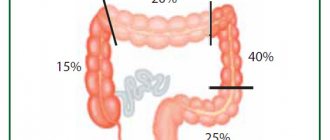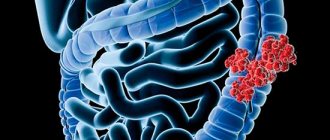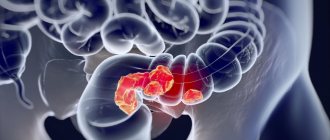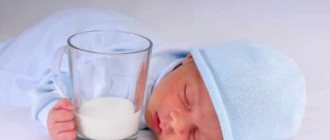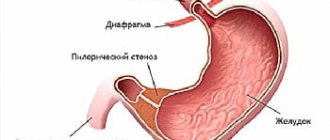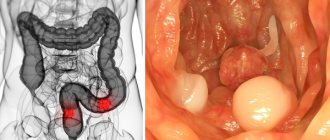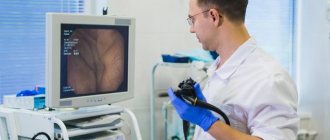Author Peter Deryabin
03/06/2016 14:00 (Updated: 09/16/2021 14:58)
Health » Healthcare
Why is modern man increasingly faced with colon diseases? How to avoid the development of malignant tumors? And what intestinal diseases are most common today in Russia and the world? The director of the Federal State Center for Coloproctology, Doctor of Medical Sciences Yuri Shelygin, spoke about this.
Growth factors for colon diseases
“Nowadays there is more and more talk about an increase in colon diseases. Why is this happening?
— The large intestine has many functions.
This is not only an organ that evacuates colonic contents, but also an organ that houses an important laboratory for the synthesis of many substances that are extremely useful for the body. These substances are synthesized by microorganisms that are found in the large intestine. Currently, more than 8 thousand organisms are identified that interact with each other.
Perhaps one of the possible factors for the growth of diseases is:
- application of modern agricultural technologies
- application of livestock technologies
For example, use in cultivation:
- cattle
- poultry farming
various antibiotics. Because we still understand that animals get sick and theoretically this can accumulate in meat. We know that hormonal drugs are sometimes used.
If we are talking about some malignant diseases of the colon, then we can clearly see an increase in incidence in those regions where:
- industry is developed
- there are environmental problems
- there are problems with water quality
And this is observed not only in our country, but also in many countries around the world.
Source: Pravda photo archive. Ru
If, let’s say, there was an accident in Japan at a nuclear power plant, maybe it will dissolve in the vastness of water, but at the same time, we probably won’t be able to track what gets into the fish and then ends up on our table.
And here we are talking not only about malignant diseases, but also about benign diseases of the colon; they are quite numerous, and this growth is observed in all industrial, developed countries, including ours.
— What do the statistics say? Where do colon diseases stand today?
— Of course, the most common disease is:
- haemorrhoids
- anal fissures
and this is largely due to bowel dysfunction.
We know that a very large number of people, most often the elderly and the fair half of humanity, suffer from bowel disorders, in particular in the form of constipation. And, of course, these factors influence the appearance of diseases such as hemorrhoids. This is equally facilitated by the presence of diarrhea.
And for women, the risk factors, of course, are:
- childbirth
- hard physical labor
Poor environment plays a decisive role in the development of colon diseases
Of course, many different methods of conservative therapy have now been developed, but in some patients, approximately 30 percent, all this ultimately leads to a very difficult surgical intervention.
In the same series is Crohn's disease, which is even more severe because it affects:
- colon
- sections of the gastrointestinal tract
- digestive system
and can affect any part of the gastrointestinal tract and cause more severe complications, including the development of:
- fistulas
- abscesses
Of course, we are now talking about malignant diseases.
If we are talking about colon cancer, then throughout the world, colon cancer is now the third most common malignant disease in both women and men.
— Can we say that diseases of the colon and specifically diverticular disease are a disease of civilized people?
— If we are talking about diverticular disease, it has been absolutely proven that these are precisely the consequences of a modern diet , because the Western type of nutrition still predominates. This is common throughout the world and, accordingly, it leads to changes in the elasticity of the fabric.
What is diverticular disease?
The structure of the intestinal wall is disrupted, the muscle layers spread, and between them the mucous membrane of the submucosal layer protrudes. Thus, a hernial protrusion occurs from the inside to the outside, and since inflammation can occur there, it can ultimately lead to very serious complications. Most often this is inflammation, that is, diverticulitis.
It can be complicated by anything in the end:
- abscess formation
- breakthrough into the abdominal cavity
- peritonitis
Today, if we are talking about Russia, then complications of diverticular disease are the fourth reason for emergency surgical interventions in general. This is clearly related to:
- consumption of refined carbohydrates
- obese
— Do GMO products affect this?
— It’s hard to say because they appeared relatively recently. But from my point of view, some genetic changes in products cannot but influence, of course, and, probably, sooner or later this will have some kind of negative impact. But it takes a very long period of time to derive such patterns.
Introduction
Over the past 20 years, the number of patients with diverticular disease has increased significantly, which is primarily due to changes in the nature of nutrition, a decrease in fiber and dietary fiber in the diet and, as a consequence, the development of constipation. For patients suffering from diverticular disease, as well as their relatives, it is important to understand all stages of development, methods of diagnosis and treatment of this disease. To fully understand the pathological process, it is necessary to begin studying the issue from the basics - the anatomical features of the organ.
Symptoms of colon diseases
— What are the symptoms of these diseases? What should a person pay attention to?
“A person understands his own patterns, how his intestines operate, and suddenly notices that the type of intestinal activity has changed. For example, I had normal stools, and suddenly there was a tendency to retain stools and constipation. This may already indicate that something is wrong with the intestines.
If the type of bowel activity has changed, you should consult a doctor.
When diarrhea appears, this can also be a symptom such as:
- malignant disease
- ulcerative colitis
Also, an admixture of blood can be as follows:
- hemorrhoids
- for ulcerative colitis
- for Crohn's disease
- may be one of the complications of diverticular disease
- profuse disease
In addition, blood is a symptom of a malignant disease - colon cancer. When severe pain appears, this may indicate either a complication, if we are talking about diverticular disease, or a large tumor that narrows the intestinal lumen and, in fact, disrupts the passage of intestinal contents to the intestine, that is, it causes obstruction phenomena .
Of course, these are already late symptoms of the disease, and here you need to rush to the doctor. A person can see for himself that some nodes, external or internal, are falling out, and he decides that he has hemorrhoids and there is no need to rush to see a doctor.
But hemorrhoids do not exclude the existence of other more dangerous diseases, in particular neoplasms. Therefore, the appearance of any kind of symptoms should be a reason to consult a doctor.
Especially if a person is over 40 years old, he should always think about the risk of neoplasm.
And most importantly, if we are talking about malignant diseases of the colon, then they can be prevented. These diseases are easy to diagnose even at the stage of a benign polyp. A benign polyp does not require strip surgery; it can be removed through a colonoscope, this is not accompanied by any pain and absolutely prevents the development of cancer.
Because all forms of cancer, even if we are talking about hereditary forms that have Lynch syndrome, still go through the stage of a benign polyp. Therefore, our destiny, our life is in our hands.
— What if a person has silent cancer?
- In this case, one of the first symptoms is anemia.
— A proctological examination is not included in the mandatory medical examination? How often should it be done?
— We entered into preventive examinations, and there we are included in mandatory examinations, and there are standards.
If we are talking about the frequency of examination of the colon, then according to the standards that we have adopted, a person after 40 years of age should undergo an examination of the entire colon every five years, if he has a complicated family history.
That is, the following must be done:
- or x-ray examination
- or colonoscopy
If there is some kind of not entirely favorable heredity, if there are blood relatives, especially if there are several in the family:
- had malignant diseases of the colon
- or in women with mammary glands
There is a certain crossover here, then it is necessary to examine the colon every two years.
“But people are often afraid of pain during this procedure.
— We give the patient the right to choose. If he prefers to do it under anesthesia, for God's sake, it's all available. But I would say that it is fairly painless in the hands of experienced professionals - those who do about 7-10 colonoscopies a day.
What causes diverticula?
Often, when visiting a doctor, patients diagnosed with diverticular disease ask the question: “Why did this disease develop?” What are the causes of this disease? A large amount of information on the Internet does not always provide a clear explanation. Let's try to tell you more.
We believe that all the main causes of diverticular disease can be divided into two interrelated groups:
- Increased pressure in the intestinal lumen;
- Weakness of the intestinal wall.
A deficiency of plant fiber in the diet leads to a decrease in the volume and increase in the density of feces, which causes disturbances in the motor activity of the colon: it reacts to even minor irritation with chaotic contractions. Thus, short, closed segments of the intestine appear with increased intraluminal pressure, which leads to bulging of the mucosa through the “weak” areas of the intestinal wall - the places where the blood vessels pass.
To clearly understand the formation of a diverticulum, we offer you an interesting comparison:
“The intestinal wall is similar to the layered structure of a football - the outside is strong and hard skin, and the inside is a soft but elastic rubber chamber.
Now imagine that a hole, a hole, forms in the outer hard shell of this ball. What will happen then? The high pressure inside the ball will push part of the soft and elastic inner rubber chamber outward, creating a pocket that sticks out. This can be compared to a hernia in the abdomen - the contents “bulge out” through a defect in the muscles.
About the same thing happens to the colon with diverticulosis. If the pressure inside the intestinal lumen is high, and there are weak spots in the muscle layer, then the inner lining of the intestine tends outward through these openings, forming protrusions in the form of pouches. They are called diverticula."
Specialists
| 5.0 87 reviews | Grigorievskaya Zlata Valerievna Mammologist Experience 18 years Reception from 4500 rub. |
| 5.0 244 reviews | Zagryadsky Evgeniy Alekseevich Mammologist Experience 46 years Doctor of the highest category Reception from 4500 rub. |
Medical center ON CLINIC on Novy Arbat st. Bolshaya Molchanovka, 32, building 1
| 5.0 75 reviews | Brother Alexander Vladimirovich Mammologist Experience 29 years Doctor of the highest category Admission from 4000 rub. |
How to treat diverticular disease, diverticulosis and diverticulitis?
Drug treatment
When treated promptly, diverticulitis responds very well to drug treatment. Inflammatory changes can be completely cured with antibacterial and anti-inflammatory therapy.
If complications develop in patients, the treatment method must be selected as least traumatic and minimally invasive as possible. The infiltrate can be completely cured with medication. The abscess can be punctured under ultrasound or CT control.
Surgery
In case of peritonitis and the need for surgery in the early stages of the disease, intervention can be performed laparoscopically - through small punctures.
Unfortunately, the development of fecal peritonitis, as a rule, requires laparotomy - a “large incision” for thorough washing and examination of the abdominal cavity.
Surgical treatment of diverticular disease outside periods of exacerbation is especially important for active travelers, as well as patients living far from regional centers. If an exacerbation of the disease occurs far from centers where you can get quality medical care, the consequences can be very unpleasant. If there are three or more attacks of diverticulitis in a year, the patient should contact the coloproctology department to determine the optimal treatment tactics outside the period of exacerbation. If surgical treatment is necessary, the operation of choice in this case is laparoscopic removal of the affected area of the colon and rectosigmoid junction as one of the causes of increased pressure in the intestinal lumen. In this case, removal of the stoma (even temporarily) is not required.
